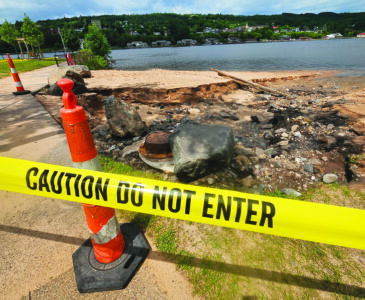Latest technology failed to find plane from 1968 crash

REDRIDGE — Missing planes last seen over Lake Superior are not uncommon.
In fact, there are several reports of such cases, partially earning the big lake the nickname of the “Great Lakes Triangle.”
Of course, that also covers the four other lakes. Lake Michigan has recorded the most missing plane incidents
But the 1968 case of a National Center for Atmospheric Research plane caught the most attention locally.
The NCAR aircraft, while conducting water radiation studies over Lake Superior, contacted the Houghton County Airport around 12:30 p.m.
It was the last contact with the three men on board the Beechcraft plane.
The NCAR sent a well-equipped team to the area in the fall of 1969 in hopes of finding any trace of pilots Robert Carew and Gordon Jones and UW graduate student assistant Velayudh Krishna.
Gary Beauchamp, later a county undersheriff, was the marine patrol officer at the time. He said the search effort was impressive.
“They had all the latest in technology,” recalled the late Beauchamp. “I believe there were four or five (NCAR) officials there along with some of our deputies.”
Lester Zinser of the NCAR headed the team and there was the latest in sonar equipment on board.
The Isle Royale Queen II was hired as the base of operations, veteran captain Ward Grosnick doing the guiding duties.
Zinser also hired four Michigan Tech students to help out in the effort.
The media was on hand in big numbers to cover the event, television stations from Marquette and Green Bay joining the Daily Mining Gazette and local radio stations.
The search area was conducted in a rectangular area (three-by-five miles) of Lake Superior near the Freda area.
Former sheriff John Wiitanen always speculated the crash took place in a location of the lake that had contained deep valleys. He believed the craft could have become lodged in one of those valleys and that currents would periodically push parts to the surface.
But aside from a couple of seat cushions and some other flotsam, the month-long 1969 search produced nothing tangible.
Possible parts of the missing craft have been found since, but none have been conclusively matched with the missing plane.
“I really thought we would find something,” a disappointed Zinser told the media. “My main concern was to hopefully provide some closure for the survivors.”
Over the years, there have been theories on what happened that afternoon.
One had the NCAR plane wandering into a no-fly zone and being accidentally shot down by an Air Force jet.
At the time, this country was in a “cold war” situation with the USSR, and K.I Sawyer Air Force Base was located just 120 miles away.
While dismissing the Air Force theory, later Sheriff Jim Ruotsala said there were parts of the puzzle that didn’t quite fit.
“For one, I never could understand why military personnel would be searching the area the next day …. especially since we didn’t request their help.”
Most of the principals in the case have passed on, including Zinser, who died in 2019 at the age of 96.
Current sheriff Brian McLean says the case remains open and that his office will investigate any leads.
“It’s a real headscratcher,” McLean noted. “Maybe old John Wiitanen was right …. that some day the plane will just come to the surface.”




